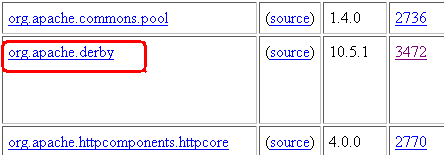Notice: this Wiki will be going read only early in 2024 and edits will no longer be possible. Please see: https://gitlab.eclipse.org/eclipsefdn/helpdesk/-/wikis/Wiki-shutdown-plan for the plan.
Difference between revisions of "EclipseLink/Examples/DBWS/AdvancedOSGi"
< EclipseLink | Examples | DBWS
| Line 13: | Line 13: | ||
<br />[[Image:EclipseLinkExamplesOSGiDeveloping_with_EclipseLink_OSGi_in_PDE-2v2.png]]<br /> | <br />[[Image:EclipseLinkExamplesOSGiDeveloping_with_EclipseLink_OSGi_in_PDE-2v2.png]]<br /> | ||
* Place the <tt>org.apache.derby</tt> bundle into your $ECLIPSE_HOME/dropins folder. | * Place the <tt>org.apache.derby</tt> bundle into your $ECLIPSE_HOME/dropins folder. | ||
| − | * Install the EclipseLink | + | * Install the EclipseLink and Jetty target Components |
Create a new Plugin project: | Create a new Plugin project: | ||
Revision as of 14:54, 11 August 2010
DBWS in an OSGi Environment
An Eclipselink DBWS service can be run in an OSGi environment using Javase 6's 'containerless' javax.xml.ws.Endpoint API.
Environment Setup
Download a version of the Eclipse IDE that includes the Plug-in Development Environment (PDE) (Eclipse IDE for Java EE Developers, Eclipse Classic 3.6.0 or
Eclipse for RCP and RAP Developers). Install the Database JDBC driver: use the embedded Apache Derby database in this example
- Download Apache Derby (org.apache.derby) bundle from Orbit.
- Place the org.apache.derby bundle into your $ECLIPSE_HOME/dropins folder.
- Install the EclipseLink and Jetty target Components
Create a new Plugin project:

